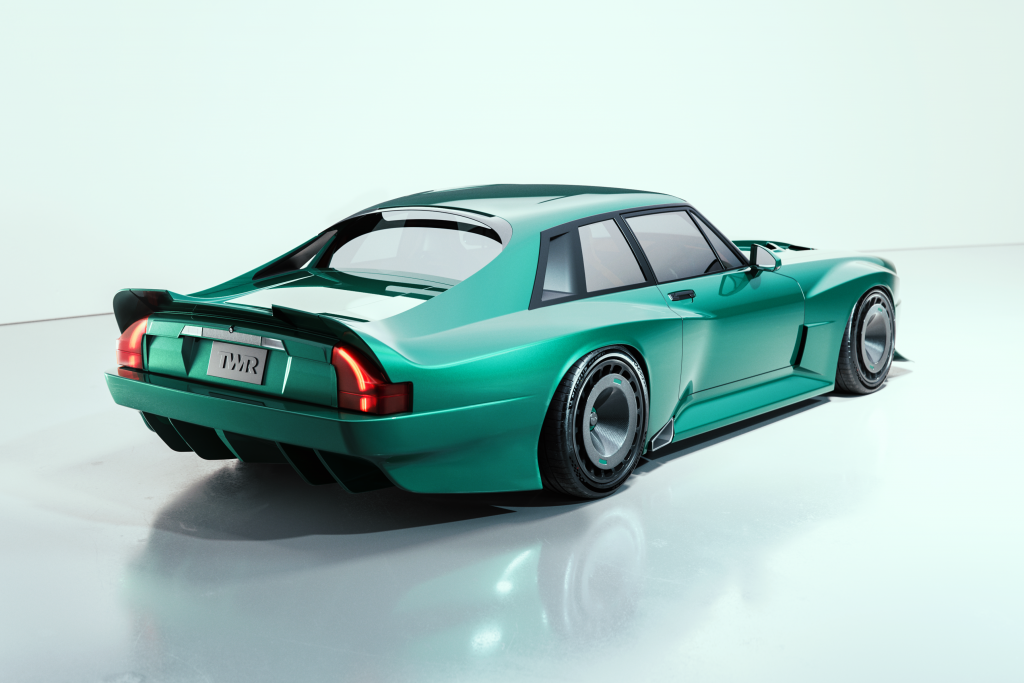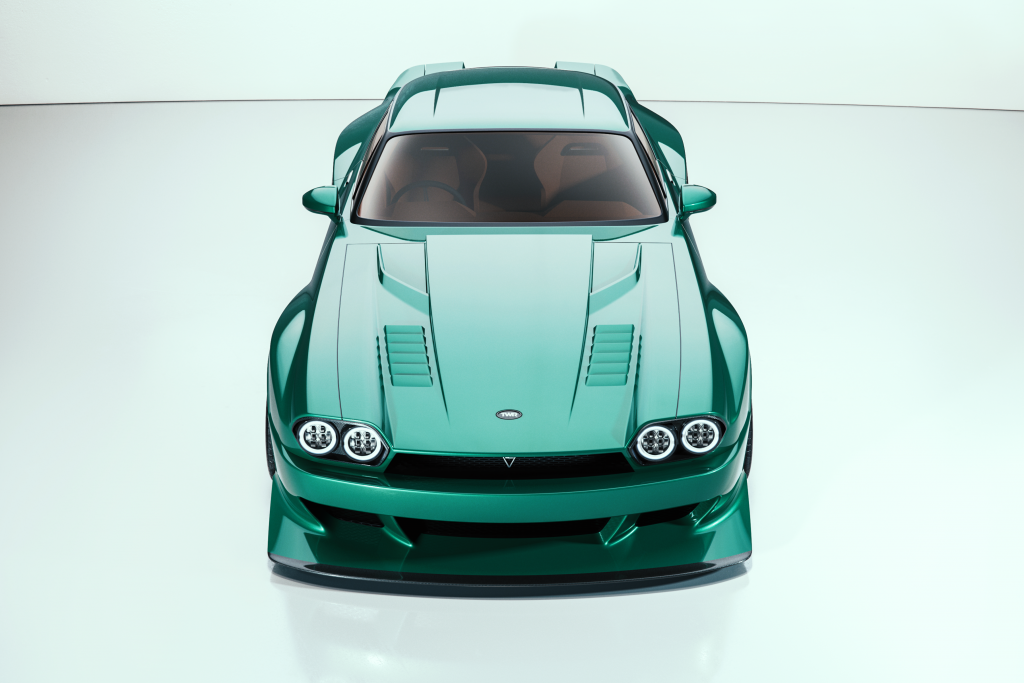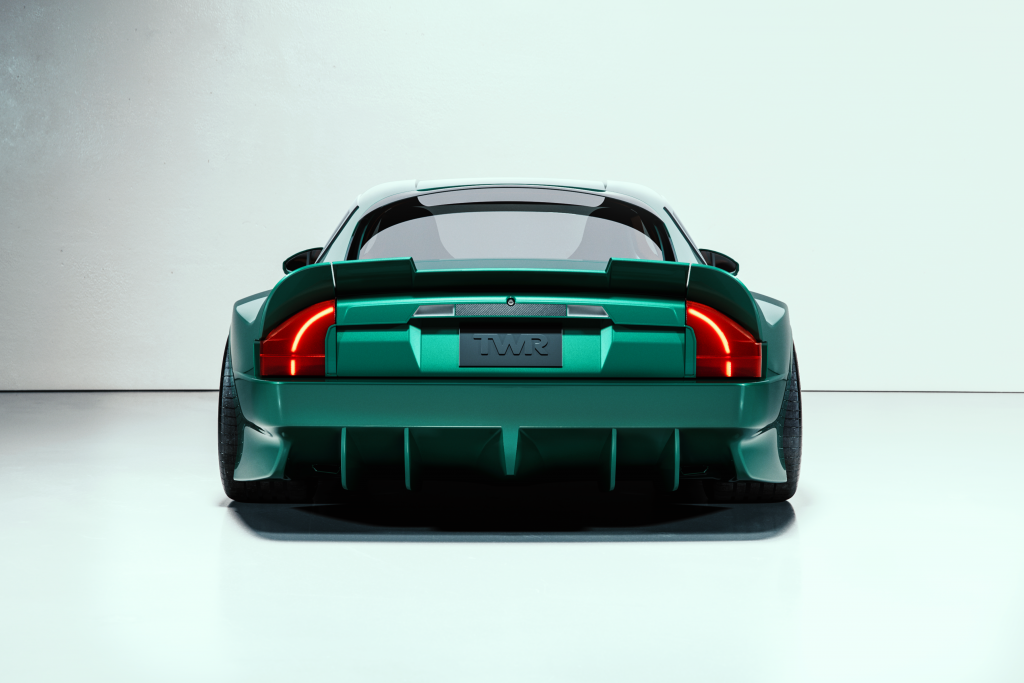THE ORDER BOOK FOR TWR’S DEBUT limited production performance car is now open (well, it is if you live in the UK). This coincides with the unveiling of the exterior design ahead of a full dynamic debut in (northern hemisphere) summer 2024.
The TWR Supercat is a supercharged V12 powered Super-GT boasting more than 600 BHP and built from the legendary Jaguar XJS platform. It is the first of a new generation of cars from one of the most storied and celebrated names in motorsport and performance cars.
It is fitting that TWR has chosen a Jaguar as the first chapter in its contemporary history. Indeed, TWR has a long winning association with Jaguar and the XJS through victories in the most demanding motorsports environments in the world including Spa and Bathurst. The Supercat will be strictly limited to 88 individual builds a number chosen to celebrate the 1988 Le Mans win in the TWR Jaguar XJR-9.

In prioritising bold and contemporary design and delivering a truly involving driving experience, the car makes a clear statement on the fundamentals that will underpin all future TWR projects that will enter production.
Indeed, TWR’s performance and motorsport DNA are evidenced in every element of the car. The selection of a manual transmission, weight-saving materials and an exhaustive testing, development and tuning programme all speak to the company’s commitment to delivering visceral and dynamic driving experiences for those who desire a truly connected and analogue driving experience.
In realising this first, landmark product, TWR has drawn inspiration from previous masterpieces across the history of the great name, stemming from Tom Walkinshaw’s work with touring cars, Le Mans monsters like the XJR-9, XJR-15 and even the XJ220 supercar.
UK clients wishing to join those who have already committed to reservations following the announcement of the revival of TWR can secure their build slot with a £10,000 refundable deposit. Production will be strictly limited with first deliveries to take place in the fourth quarter of 2024.
As individual builds, all TWR clients will be afforded a full scope for personalisation. Therefore, pricing will vary depending on individual specifications but will start at an indicative price of £225,000 ($A432,500) excluding local taxes.

Extensive Engineering, Test & Development
The TWR Supercat has been engineered by a team led by Fergus Walkinshaw, son of TWR founder, Tom Walkinshaw. He has gathered a group of technical and operational talent from the most celebrated names in motorsport and performance car development. This includes: McLaren, Ferrari, Porsche, Williams, Mercedes F1 and Renault F1.
The design, engineering and development programme of the Supercat series sets the standard for all future TWR products and production runs. The development of this project started more than two years ago and has taken hundreds of thousands of collective hours to get to its current production-ready state.
This includes a full test and development programme that has taken place across specialist proving-ground facilities utilised by the world’s leading performance car brands, F1 teams and performance specialists. This includes full aerodynamic and CFD testing and durability and dynamic testing that replicates highly dynamic driving scenarios on both the road and the track.
Bold and contemporary design
Like the engineering talent that has led the realisation of the Supercat project, TWR has invested significantly in world-class design talent. Khyzyl Saleem worked as Design Lead. His approach, is shaped by his standing among the world’s leading digital and 3D car concepting stylists and through many performance-focused OEM projects, including with the late Ken Block and Travis Pastrana.
Magnus Walker, designer, car collector and one of the leading figures in the contemporary automotive world also consulted on the Supercat project. His experience as a collector, restorer and modifier of iconic sportscars was essential in delivering Walkinshaw’s vision to create a car built from the foundations of a Jaguar XJS while delivering distinctive aesthetics and substance befitting a contemporary TWR car.
The result clothes the Jaguar XJS’ iconic profile, silhouette, flying buttresses and front graphic in an altogether more muscular styling. The result speaks of TWR’s clear vision to deliver a dynamic Super-GT that is equally at home on the track as on the road. Subtle nods to TWR’s long-standing Jaguar heritage combine to create a more aggressive overall aesthetic through reference to iconic cars like the Jaguar XJ220, XJR-9 and XJR-15.
A fundamentally re-imagined interior will be unveiled when the car makes its dynamic debut in the summer of 2024.

An involving and characterful TWR Super-GT from the ground up
While the Supercat retains the unmistakable stance and silhouette of the Jaguar XJS, every exterior panel has been re-sculpted in Carbon Fibre. This material selection reflects the utilisation of motorsport engineering principles that will characterise this and all future TWR products. The development of the body alone took tens of thousands of hours.
This has delivered a significant weight saving, drag improvements and significant rigidity benefits over traditional panel materials. Delivering the mechanical dynamic advantage is fundamental to TWR’s promise to deliver a truly involving and analogue Super-GT experience for both road and track.
TWR: A motorsport and performance legend regenerated
The new car is the first offering from the modern TWR, founded by Fergus Walkinshaw and business partner John Kane to build upon the legacy left by Fergus’s father, legendary constructor and racer Tom Walkinshaw who built the original TWR into a global motorsport and performance engineering powerhouse during the 1980-90s.
The Supercat is the first TWR product for the 21st century, and as such is a rolling showcase for what the company can do, fusing modern engineering and production techniques with a classic base to create something truly unique, truly sporting, and truly TWR. Work on the project began almost three years ago at TWR’s Newbury base which will serve as the production home for this and future TWR projects.
